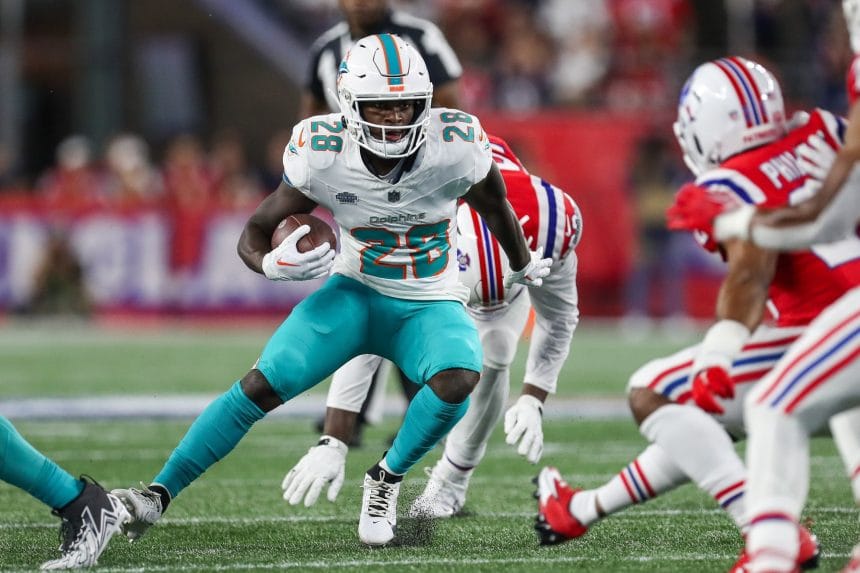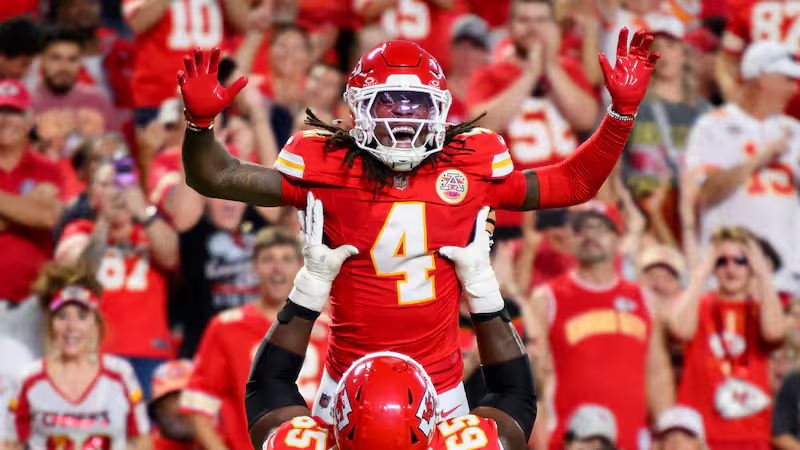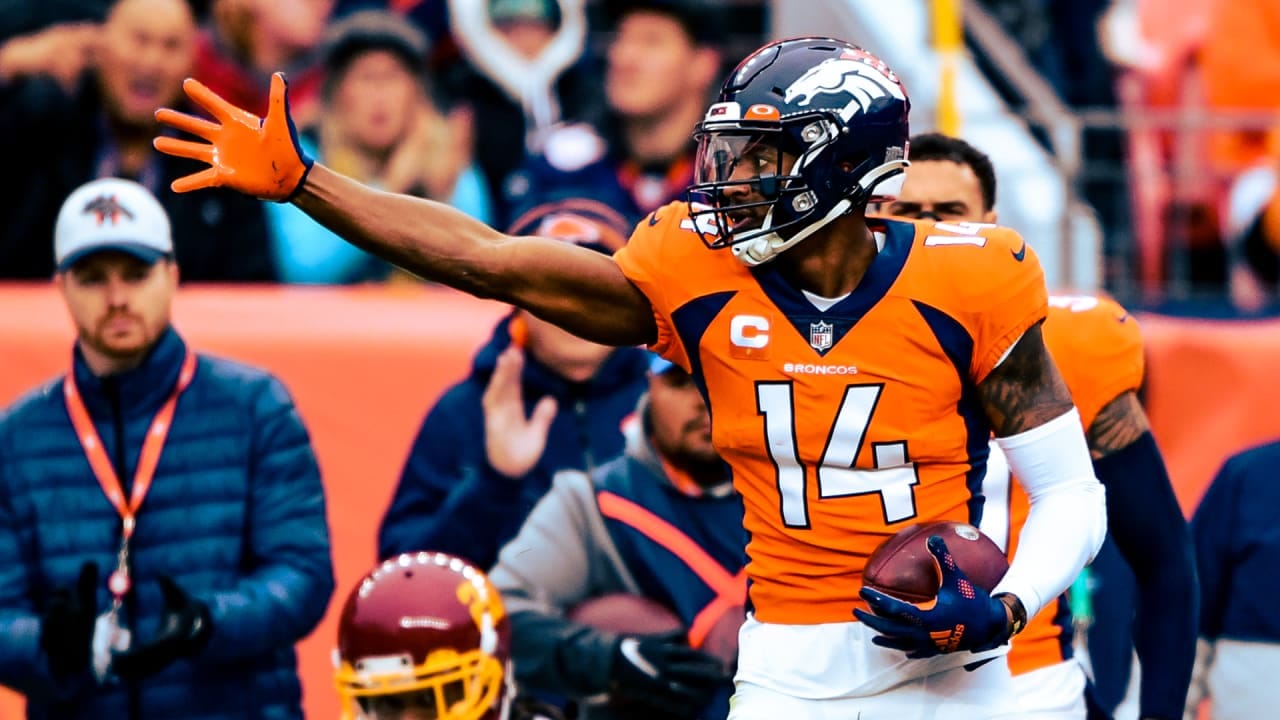
Overlooked Stats: Nine Undervalued Chain Movers at Wide Receiver
In fantasy football, gaining an edge means going beyond rankings and uncovering predictive stats that go overlooked. Legacy stats like receptions, yards, and past PPR output are solid but are also low-hanging fruit. Every bushy-haired grandpa with a fantasy football magazine who enters your draft room uses these. That limits their effectiveness as tools for beating your league despite excellent signal.
The real advantage comes from digging deeper and identifying underused metrics that point to future scoring spikes. The trick is spotting trends others miss—finding what actually predicts fantasy points before the rest of your league catches on.
PEARSON CORRELATION COEFFICIENTS
Pearson correlation coefficients are easy to calculate and directly measure the relationship between two variables. Ranging from +1 to -1, they show how tightly linked the two variables are. In fantasy football, correlations over 0.400 suggest a meaningful signal, while correlations over 0.600 are highly significant.
Running correlations is simple with a large, accurate dataset. Today, this is easily sourced from sites like RotoViz, PFF, or Fantasy Points, all of which allow a user to quickly dump the information into a spreadsheet. Once familiar with the process for running correlations, analyzing all of the players takes only a few short days. I try to carve out time each spring to update, usually with some slight tinkering.
Certain variables matter when organizing the dataset. We want enough data to stabilize results without dipping into an outdated era of gameplay. A five-to-ten-year window is ideal. I also apply filters, excluding players who don't hit minimum opportunity thresholds or who missed the following season, and anchor to PPR +N1 to see which stats best forecast the following year's output. Setting up correlations with different parameters will produce varying results.
One weakness of correlation coefficients as it pertains to fantasy football is era-specific player types. For example, an era dominated by YAC-heavy slot receivers might inflate the predictive value of missed tackles, but the coexistence of multiple influential players of a similar type can itself be an outlier. A new five-year window may see players of this type cycle out, and the trend could regress entirely as they fade away.
Still, year over year, certain stats show a consistent rate of predictiveness. For instance, YPRR and market share routinely rank high; even if they switch places in rank from one study to another, they each maintain consistently good signal. Other stats, like WR alignment, for example, rarely matter. Focusing on the general consistency rather than the specific ordering helps us focus on what makes a difference.
Over the coming weeks, I’ll explore stats strongly correlated to PPR +N1. This edition will focus on WR first downs, comparing that to best ball ADP to spotlight potentially undervalued players.
FIRST DOWNS AS A PREDICTIVE CORRELATOR TO PPR +N1
Based on my parameters (30-target minimum) and a ten-year sample using PFF first down data, first downs had a correlation coefficient of 0.574 with PPR +N1, ranking in the top nine percentile out of 271 tested stats from RotoViz, PFF, Fantasy Points, ESPN, and NextGen Stats.
Using Fantasy Points’ first down data, which is limited to 2021–2023 (2024 can’t be used because it does not yet have an N1 year), first downs actually show up as the most predictive WR stat with a correlation coefficient of 0.716.
While a three-year sample is too small to be implicitly trusted, it definitely casts a net in the right direction. Given the strong signal from both PFF and Fantasy Points' stat databases, first downs deserve recognition as one of fantasy football’s most predictive WR stats.
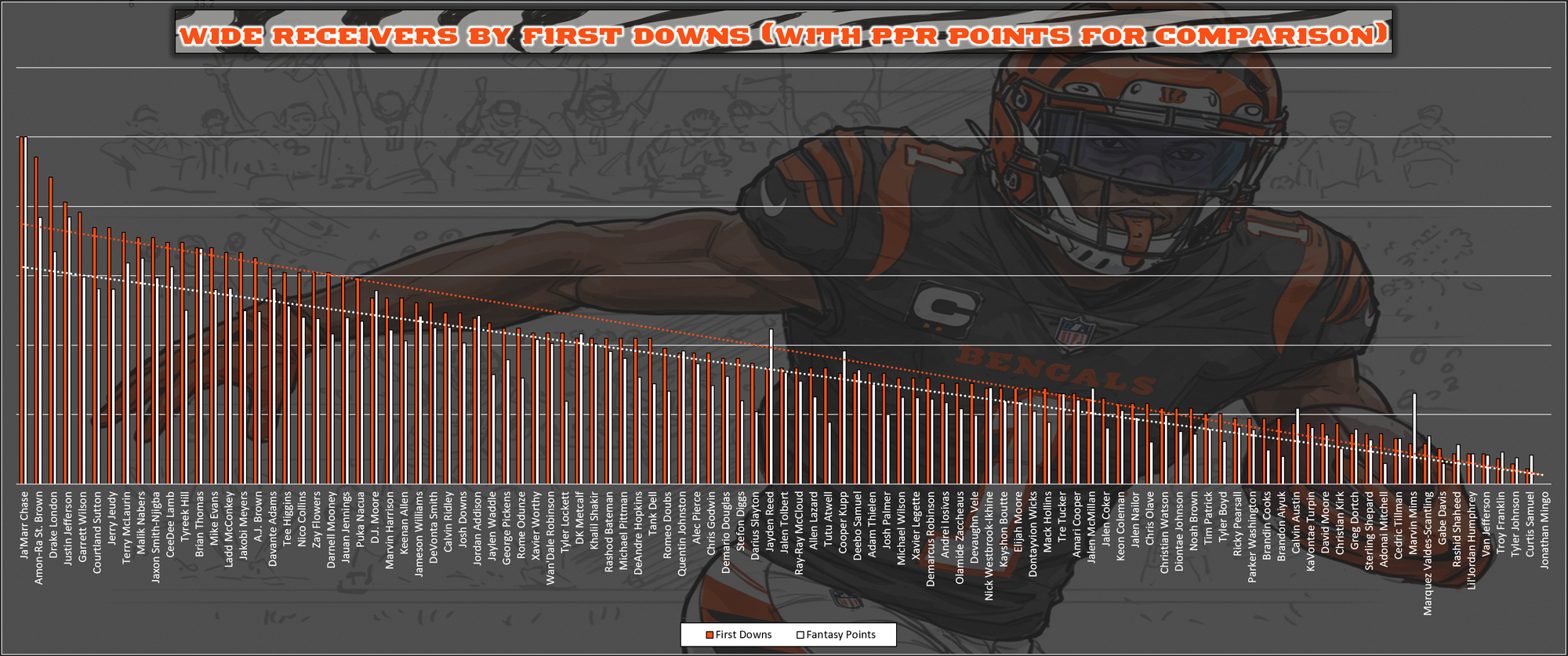
Initially, first downs might seem like an arbitrary stat to emphasize, but if we pause to consider it, we’ll recognize that they highlight the right kind of volume. Each first down reflects a productive, high-leverage target—and a gain big enough to extend a drive. These are the same plays that rack up receptions and yards, the backbone of PPR scoring. In short, first downs filter out empty participation.
Additionally, coaches and QBs naturally lean on their best players in key moments, so those who make a bigger difference will get more chances when a play is necessary to extend a drive. And every first down begets more plays, boosting both gross volume and scoring chances for everyone on the team.
First downs provide more signal than touchdowns because they occur more frequently. Larger sample sizes lead to more reliable results.
If anything, first downs may provide a nearly irrelevant distinction from legacy stats because they correlate almost too well. If they are reading as a measure of a composite of receptions and yardage, they largely perform the same function as PPR. As a result, it may be harder to find WRs who are being undervalued based on first-down production because they are already being valued for their past PPR production.
However, there are a few who are being overlooked. Here are nine WRs who ranked notably higher in first-down production this spring based on 2024 Fantasy Points data than they do in Underdog ADP.
AMON-RA ST. BROWN
- Underdog ADP
- WR6
- 2024 First Downs
- 71 (2nd in the NFL)
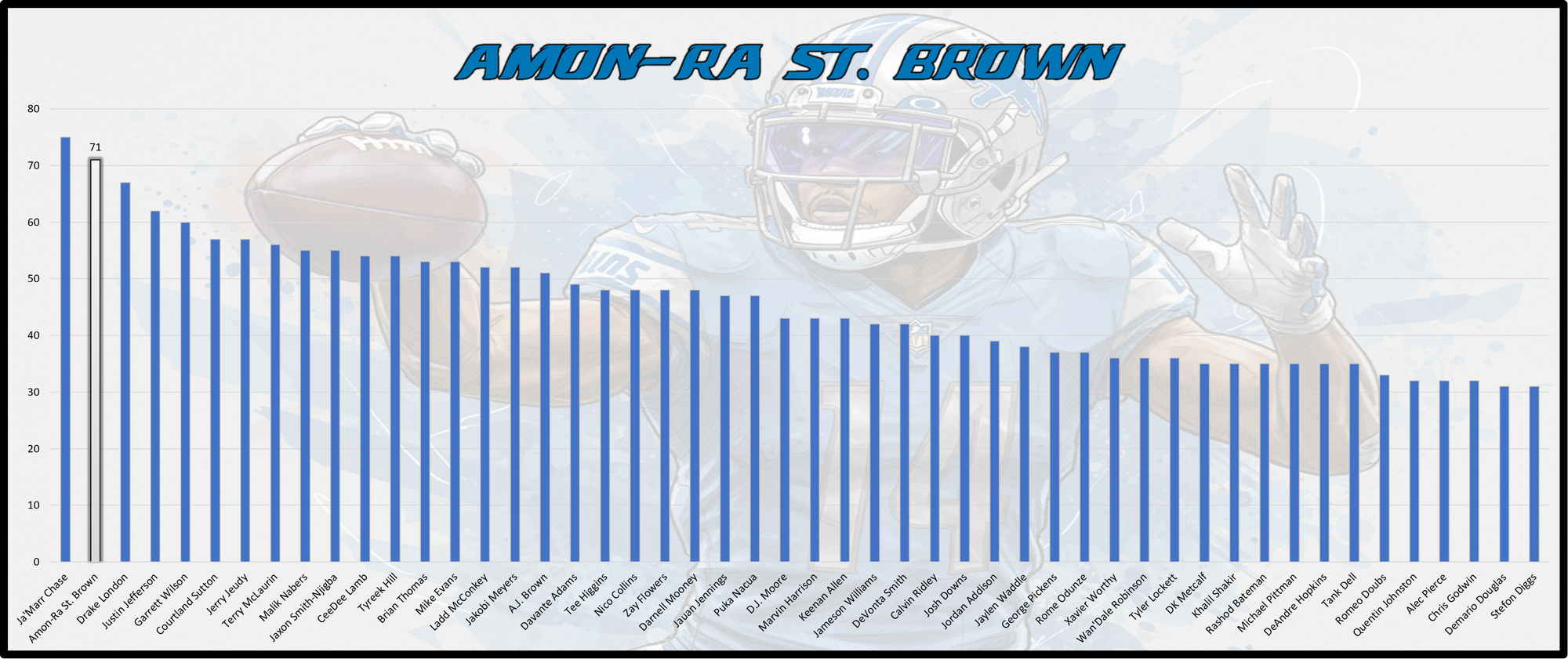
It’s hard to call Amon-Ra St. Brown a massive value as he’s going for a first-round price tag—10.2 on Underdog, the WR6 overall. Even so, he is coming off back-to-back top-three WR seasons and ranked second overall in 2024 in first downs with 71. It is entirely understandable that Justin Jefferson and Ja’Marr Chase should outrank him among WRs in ADP, but it is equally fair to wonder if CeeDee Lamb, Puka Nacua, and Malik Nabers are unjustly nudging him out of their way. St. Brown has been a fixture along the positional apex and a true difference-maker in fantasy football for three straight seasons, and he should be seen as a high-upside option late in the first round.
TERRY MCLAURIN
- Underdog ADP
- WR17
- 2024 First Downs
- 56 (8th)
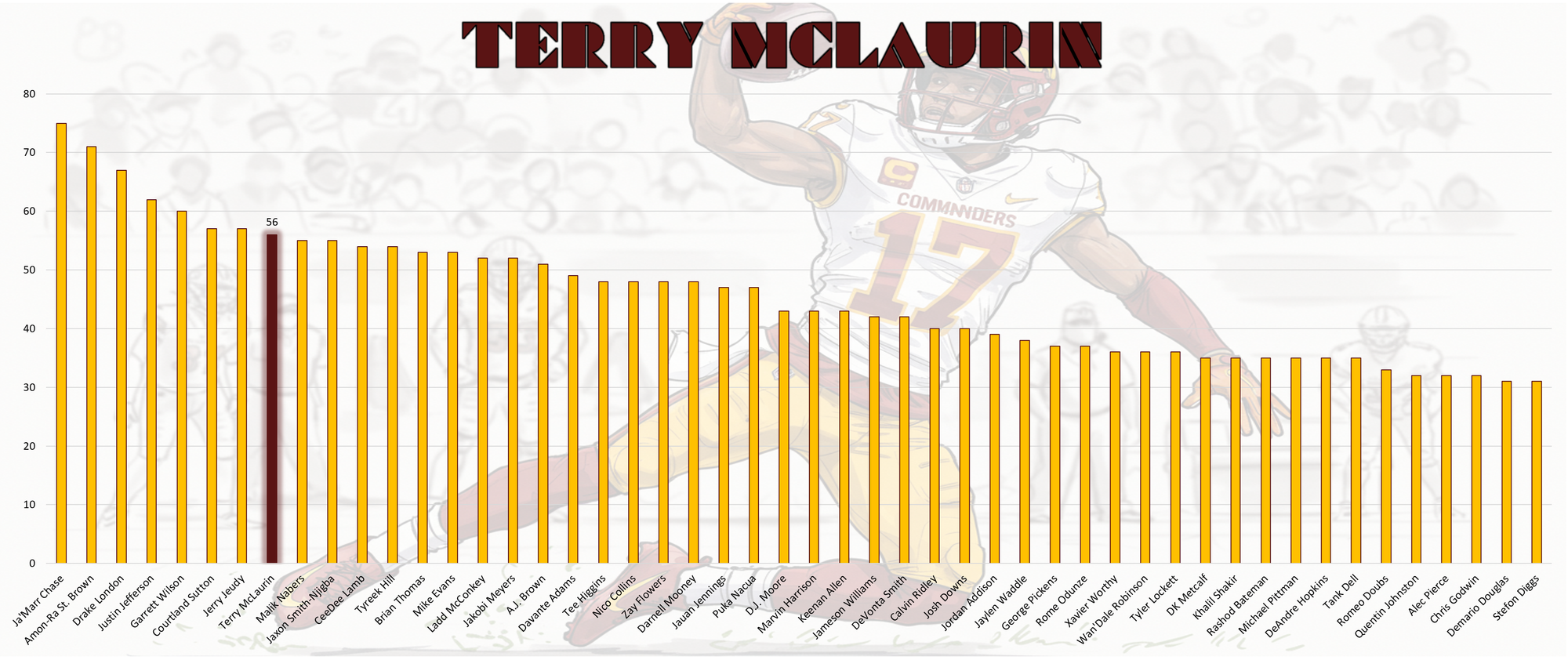
It’s strange that a player can be a six-year vet and still feel like a mystery, but it’s hard to make heads or tails of Terry McLaurin’s 2024. He suddenly posted 13 touchdowns—more than double his steady career average of five—and ranked second among WRs in fantasy points over expected (FPOE), blowing past his previous best of 13th from his 2019 rookie year.
It’s easy to see his QB, 2024 Rookie of the Year Jayden Daniels, as just the catalyst needed to carry McLaurin to his full potential. Not only did McLaurin rank second in the NFL in receiving TDs a year ago in his first season with Daniels under center, but he finished eighth in first downs. And yet, he is still going WR17 in Underdog ADP.

